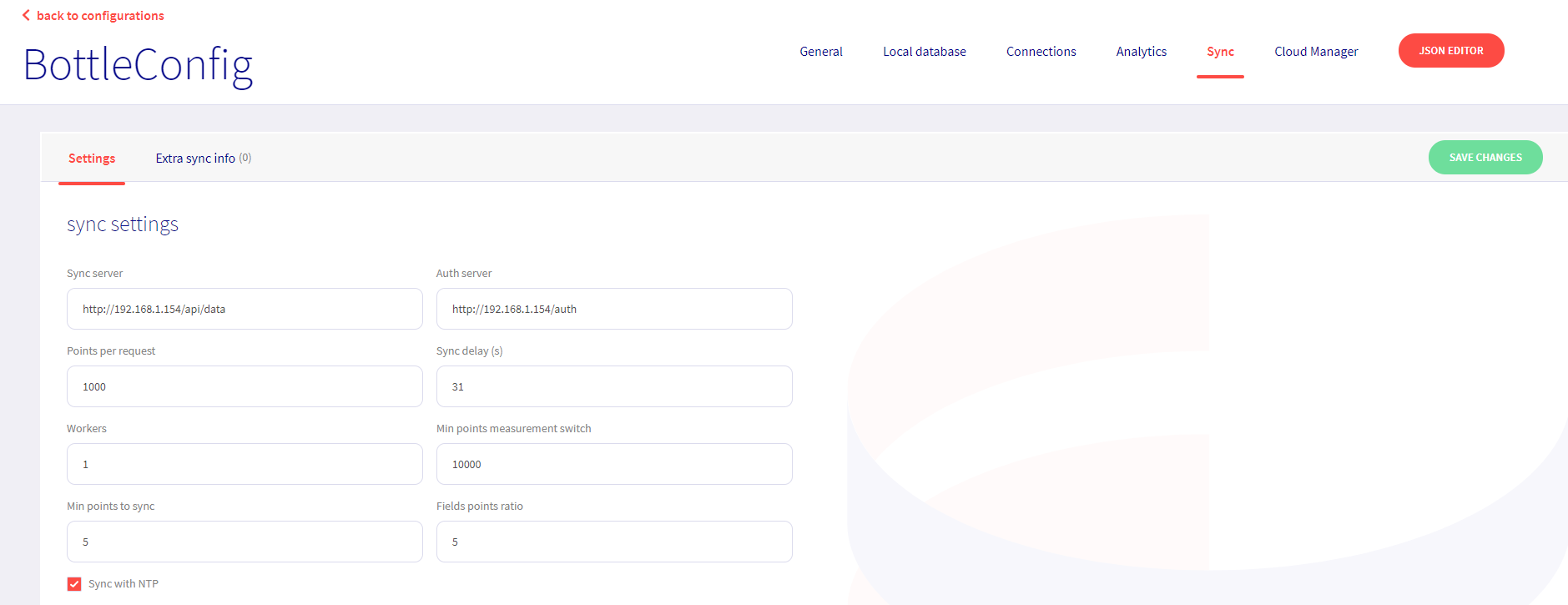sync
Settings
| Field | Function |
|---|---|
| Sync server | Address of the sync server |
| Auth server | Address of the auth server |
| Points per request | Amount of points that syncer will send in one request |
| Sync delay | Syncer will sync data with max timestamp of now - sync delay. Useful when using downsampling, we use a sync delay to be sure every point is already inserted in the database before syncing (Unit: seconds) |
| Workers | Number of workers we use in the syncer. The measurements to sync are divided between these workers. More workers results in a higher load but faster syncing |
| Min points measurement switch | The Worker will switch measurement after this amount of points is reached (A worker syncs measurement per measurement) |
| Min points to sync | The syncer will wait until this amount of points is reached before syncing |
| Fields-points ratio | Defines the incline of the linear funtion behind the calculation of the amount of points per measurement. The more fields a measurement has, the less points will be included in the sync packages => starting from min points to sync, this factor is the negative slope |
| Sync monitoring | With Capture, we automatically make a measurement called monitoring. When Sync monitoring is disabled, this measurement will not be synced to the cloud |
Optimisation
Sometimes the sync process can be quite slow on your system. Therefore, it is recommended to optimise this using these settings. Here we give you some example optimisation you can use to speed up the progress.
- Decrease points per request
- Increase the workers (When resources are available)
- Increase Min points to sync
- if Min points to sync is 1 and the syncer is up to date, it would be possible to send packages of 1 point to the cloud. => which is not performant.
